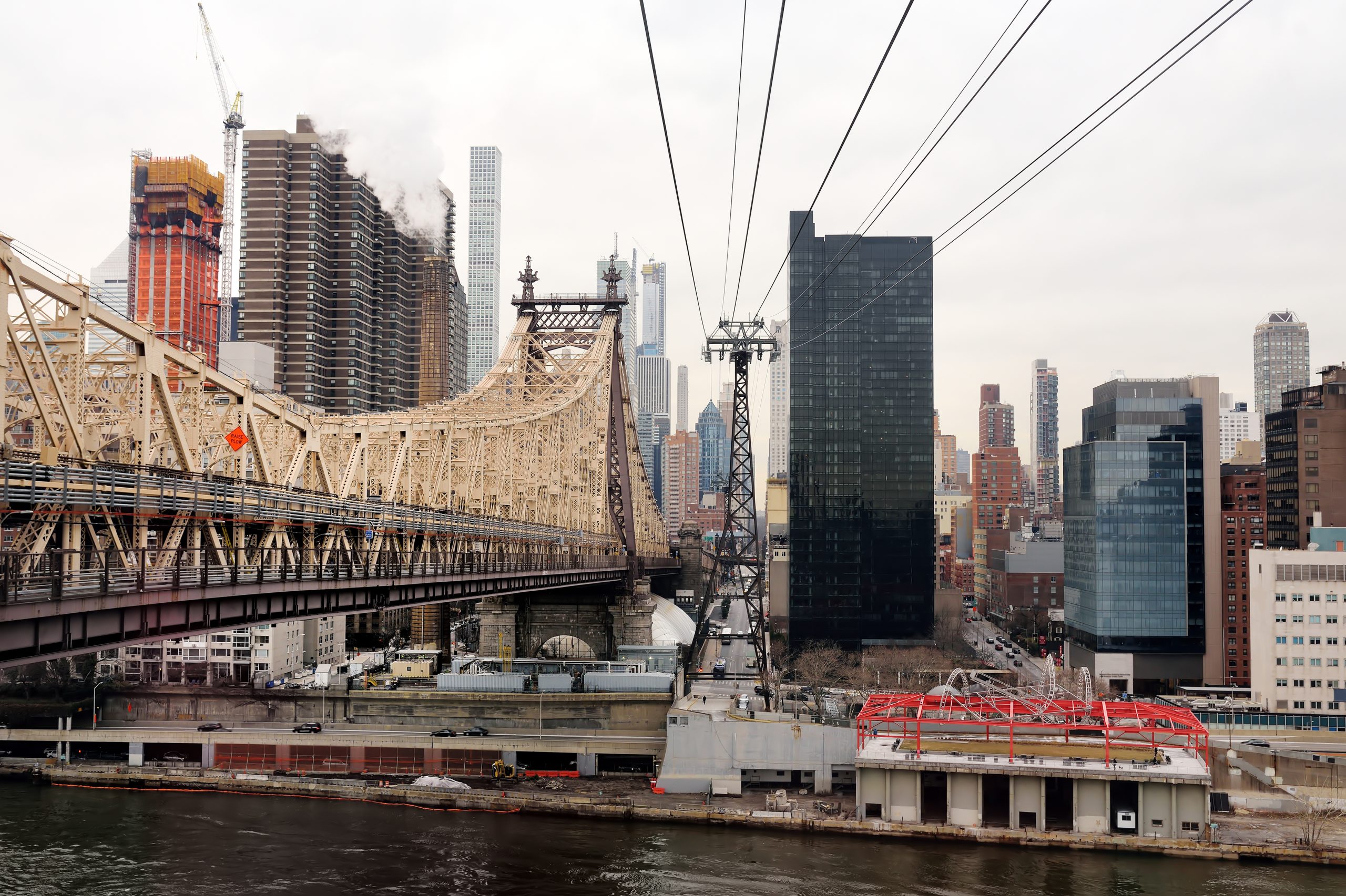“New Perimeter Deregulation” from Rent Stabilization
April 12, 2018
A big part of my consulting practice involves conducting Rent Stabilization Due Diligence for Multi-Family Buildings and doing Rent Stabilization Coverage Analysis for Tenants. Therefore, I am often tasked with answering the question – Is this apartment subject to Rent Stabilization? Ninety percent of the time, the answer (in my practice anyway) is YES, the apartment was NOT deregulated and is subject to Rent Stabilization.
The simple truth is that there are very, very few ways to legally and properly deregulate a Rent Stabilized apartment. That is why we see so many illegal deregulations, which is a topic for another day (soon!).
This post concerns probably the least well-known way an apartment can leave the auspices of the Rent Stabilization Law, and that is through a process that I call “New Perimeter Deregulation”. I recently engaged heavily with the concept when I did a Rent Stabilization Due Diligence Analysis on a building in Manhattan. The main subject of our inquiry was one Apartment 8D.
1. Apartment 8D
The rear of the eighth floor had a terrace, which was shared by Apartments 8C and 8D. While Apartment 8C occupants had direct access to the roof terrace from within the apartment, Apartment 8D occupants had to walk through a means of egress in the building’s common area hallway in order to reach the terrace. As part of the building’s redevelopment plan, the owner decided to convert the terraces into bedrooms.
Owner filed plans and obtained permits from the New York City Department of Buildings, allowing it to transform part of the terrace space into internal space within Apartment 8D. By doing this project, owner increased the livable square footage of Apartment 8D by approximately 146 Square Feet, a 36% increase.
2. The New Perimeter Rule
DHCR Fact Sheet #5 states:
“If an apartment is a newly constructed unit or a new apartment because its previous outer dimensions were substantially altered, the owner may be entitled to set a first (negotiated) rent.”:
That policy has been upheld by appellate case law. In 300 West 49th Street Associates v. DHCR, 212 A.D.2d 250 (AD 1st, 1995):
“The mechanism pursuant to which a landlord may charge a “first” or “free market” rent is an administratively created policy implemented by DHCR in its capacity as the administrative agency which regulates residential rents. The policy applies only when the perimeter walls of the apartment have been substantially moved and changed and where the previous apartment, essentially, ceases to exist, thereby rendering its rental history meaningless. If the rental history of a stabilized apartment is no longer applicable due to the creation of a new unit with completely different perimeter walls, there would be no rational method which DHCR could utilize to calculate the legal rent since the stabilized rent is based upon a continuous chain of rental history. By way of example, such allowance might be granted if a two-bedroom apartment were split into two studio apartments or two smaller dwellings were consolidated to form one large apartment. In either circumstance, the rental history of the prior units would be inapplicable to the newly created apartment for the purposes of determining the stabilized rent as the former unit or units no longer remain.” [Emphasis supplied.]
3. Cases Where First Rent Allowed
In Dixon v. 105 West 75th Street LLC, 2015 WL 4744404 (Sup. Ct. NY Cty 2015) the court held that the owners were:
“entitled to [a] first rent without rent stabilization restrictions because the documentary evidence established that the Apartment was vacant prior to the renovations; was a newly created duplex apartment which did not previously exist; the C of O prior to the work being conducted showed that no roof-top livable space existed, nor was there a duplex apartment; the DOB work permits and subsequent C of O’s showed that the Owners created additional livable space….[and] Here, the documentation submitted by the Owners showed that the Apartment was converted from a one floor apartment to a duplex apartment which included additional living space, installation of an internal staircase, and additional roof-top penthouse. This created a new unit obliterating the existing apartment thereby rendering its rental history meaningless. [Thus] Owners were entitled to deregulation of the Apartment’s rent stabilization status.”
In 446-450 Realty Co., L.P. v. Higbie, 30 Misc.3d 71 (App. Term 1st 2010) the court held that a landlord that made significant dimensional changes to a single floor apartment to create a new, duplex apartment prior to tenant’s occupancy was entitled to charge a free market or “first rent.”
In Polyak v. DHCR, 2001 WL 36405730 (Sup. Ct. NY Cty 2001), the court upheld a finding from DHCR that the apartment first occupied by the tenant and her family ceased to exist; that it had been combined with the adjacent apartment to create an entirely new unit, which, therefore, passed out of Rent Control and into Rent Stabilization.
4. Cases Where No First Rent Allowed
In Velasquez v. DHCR, 130 A.D.3d 1045 (2nd Dept. 2015), the court held that a new unit was NOT created by simply unsealing a doorway that led to two additional bedrooms.
In Devlin v. DHCR, 309 A.D.2d 191 (1st dept. 2003), the court held that a landlord who merely altered one bedroom wall in Rent Stabilized apartment, in order to enlarge a neighboring apartment, was not entitled to charge tenants “first rent”.
Replacement of certain kitchen and bathroom fixtures and the addition of 27-square-foot closet did not allow a landlord to charge a “first rent” on the basis of there having been a “newly created unit.” Roker Realty Corp v. Gross, 163 Misc.2d 766 (App. Term 1st 1995).
Installation of kitchen and bathroom fixtures and reduction of apartment size by removal of two closets (resulting in reduction in apartment size) did not create a new apartment entitling the landlord to a “first rent” because “[t]here was no significant change or rehabilitation of the existing apartment, nor was a new housing accommodation created in space previously used for nonresidential purposes.” Cedot Realty Corp v. Estwanik, 3/24/95 N.Y.L.J. 28, col. 6 (App. Term 1st Dep’t).
5. If the “First Rent” for the new-perimeter apartment is above the Deregulation Threshold, then is the new apartment deregulated?
If the “First Rent” for the new-perimeter apartment is above the Deregulation Threshold, then is the new apartment deregulated?
I found case law and a DHCR Opinion Letter that supports the result that a new-perimeter apartment with a “First Rent” above the Deregulation Threshold is, in fact, deregulated.
In Rubin v. Decker Associates LLC, 52 Misc.3d 1208(A) (Sup. Ct. NY Cty. 2016), the court held:
“Apartment 8F is not subject to rent regulation under the ETPA. A landlord may charge “first” or “free market” rent “when the perimeter walls of the apartment have been substantially moved and changed and where the previous apartment, essentially, ceases to exist.” (Matter of 300 W. 49th St Assoc. v. N.Y. St. Div. of Hous. & Community Renewal, Off. of Rent Admin., 212 A.D.2d 250, 253 [1st Dept 1995].) Plaintiff’s argument that unit 805 and apartment 8F are the same unit is without merit. Unit 805 was combined in 1997 with four other units to create apartment 8F. Apartment 8F is five times the size of unit 805.
The perimeter walls of apartment 8F were substantially moved when defendant created apartment 8F. Because the perimeter walls were substantially moved, defendant was permitted to charge a “first” rent for the newly formed apartment. The ETPA excludes from rent regulation units with legally regulated rent over $2000. Defendant has proven that the first rent charged after apartment 8F was created was $6995…A New York State Housing and Community Renewal opinion letter provides that “if the first rent, negotiated between owner and tenant, is $2000 per month or more, …the combined apartment would be high-rent vacancy decontrolled.” (N.Y. St Div of Hous & Community Renewal Opinion Letter Jan 25, 2001 [citing 9 NYCRR 2520.11(r)(10) ] .) Because the first rent defendant charged exceeded $2000, apartment 8F is expressly decontrolled from rent stabilization.”
[Emphasis supplied.]
I actually managed to dig up the DHCR Opinion Letter dated January 25, 2001, which states:
“January 25, 2001…
Your inquiry is as follows:
A tenant currently residing in Apt. A at a rent stabilized rent of $961 per month. Apt. B has become vacant. The last regulated rent for Apt. B was $1,007.86. The tenant in Apt. A has requested that the landlord combine Apt. A and Apt. B, and that the combined apartments be renovated. The tenant in Apt. A will then occupy Apt. AB and is willing to agree that the new apartment is not rent stabilized and that the rent for the new apartment shall be a fair market rent.
Does the Division agree that the tenant [now] in Apartment A will no longer have rent stabilization status after the apartments are combined? Does the Division agree that the landlord will be entitled to charge a fair market rent for the apartment?
At the outset it should be noted that the regulatory status of an apartment is not determined by agreement of the parties, but rather by the provisions of law and regulation. In this regard, Rent Stabilization Code (RSC) Sec. 2520.13 provides that, with certain exceptions not relevant to the situation as you described it, any waiver by a tenant of rights guaranteed by the rent laws or regulations is void.
If the combination of apartments which is proposed occurs, the owner would appear likely to qualify for a “first rent.” “First rents” are based on significant alterations to the outer dimensions of a housing accommodation such that the subject apartment did not, in effect, exist on the base date of rent stabilization (generally 1969 or 1974). Therefore, where two or more housing accommodations are combined, the owner is entitled to a “first rent”, negotiated with the tenant. The first rent becomes the new base rent upon which future stabilized increases are to be computed.
Sec. 2520.l(r) (10) was recently added to the RSC by amendment effective December 20, 2000, … and reads as follows: “where an owner substantially alters the outer dimensions of a vacant housing accommodation, which qualifies for a first rent of $2,000 or more per month, exemption pursuant to this subdivision i.e., [high-rent vacancy decontrol] shall apply.”
Therefore, if the first rent, negotiated between owner and tenant, is $2,000 per month or more, it appears that the combined apartment would be high-rent vacancy decontrolled.”
6. Seventy-Five Percent (75%) Chance of Deregulation
I gave the owner a Seventy-Five Percent (75%) chance that, if tested by a court or DHCR, owner would ultimately be allowed to charge a “first rent”, i.e. a market rent, for Apartment 8D.
I based my opinion on the law and the following facts. There was no case exactly on point. The terrace outside Apartment 8D, however, did NOT even belong to 8D before the project. In that regard, this was not about converting outdoor space into indoor space. The extra 146 SF were not previously associated with 8D. Apartment 8D truly has a brand new perimeter and it is growing in size by almost thirty-five percent. To me, it seems like a new unit.
Respectfully submitted,
Michelle Itkowitz






